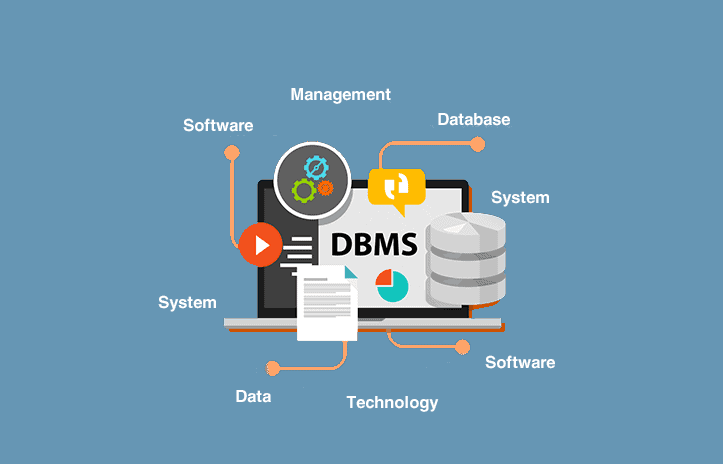For developers and businesses alike, selecting the right operating system is crucial, especially when it comes to database management tasks. macOS has been increasingly standing out as a preferred choice for many in the software development community, and for good reasons.
Understanding why macOS holds such appeal can offer valuable insights into optimizing development workflows and making informed decisions for your database management needs. From robust security features to an array of dedicated tools designed to streamline tasks, macOS offers a range of advantages that are hard to ignore.
This article aims to delve into these benefits, exploring why macOS is not just a viable but often a preferable platform for database management, a critical component of any modern business’s tech stack.
Rise of macOS in software development
Over the years, macOS has gained substantial ground in the software development community, moving from being considered a niche choice to one that’s widely embraced. Several factors contribute to this growing adoption rate, not least of which is the reliability and stability that macOS offers right out of the box.
There’s a tangible sense of fluidity when switching between tasks or running multiple applications simultaneously, a feature indispensable for development work that often involves juggling various responsibilities.
Another noteworthy point is the Unix-based architecture of macOS, which provides a robust and flexible development environment. The Unix foundation brings in a level of power and control often missing in other operating systems, offering an almost seamless experience for those already comfortable with Linux platforms.
This makes it easier to manage package installations, dependencies, and even complex development environments without a steep learning curve.
Moreover, the native support for a variety of programming languages and development tools on macOS is a significant draw. Whether it’s Python for data manipulation, Node.js for backend development, or Docker for containerization, macOS has built-in support or easy-to-install options for a broad spectrum of development needs.
This minimizes the “setup friction” that can often hinder the development process, letting you focus more on writing code and solving problems than wrestling with system configurations.
Last but certainly not least is the thriving ecosystem of third-party applications and tools specifically designed for macOS. The App Store and other platforms offer a multitude of specialized software solutions that can significantly boost productivity, from advanced code editors to powerful database management systems.
So, it’s hardly surprising that macOS is becoming a go-to for developers looking for a reliable, versatile, and powerful operating environment. The increasing rate of adoption is a testament to its capability to meet the multifaceted demands of modern software development, including the complex requirements of database management.
macOS and database software compatibility
One of the key advantages of macOS in the realm of software development is its broad compatibility with a range of database software. This flexibility not only allows for a more versatile development environment but also opens up options for leveraging specific database features tailored to various project needs.
For starters, traditional relational databases like MySQL and PostgreSQL offer native support for macOS. Installation is generally a straightforward process, and the databases integrate well with macOS’s underlying system architecture. These databases are well-suited for a wide variety of applications, from small-scale projects to large enterprise systems.
NoSQL databases like MongoDB also have robust macOS support. These databases are increasingly important for projects that require flexibility in data structuring and scalability. MongoDB, for instance, offers a native macOS installer and has comprehensive documentation tailored for macOS users, making it easier to get started and troubleshoot any issues.
But perhaps one of the most exciting developments in recent years is the compatibility of SQL Server with macOS, thanks to containerization solutions like Docker.
While SQL Server is a product traditionally associated with the Windows ecosystem, the advent of containerization has blurred the lines between operating systems, enabling a more fluid experience across platforms. SQL Server on macOS provides a robust, feature-rich environment that stands up well to its Windows counterpart, making it an increasingly popular choice for database management on this platform.
So, when it comes to database software, macOS offers a spectrum of options, each with its own set of features and advantages. This compatibility not only makes life easier for those involved in database management but also offers the flexibility to choose the right database software based on the project’s unique requirements.
The wide range of compatible database software is yet another feather in the cap for macOS, solidifying its position as a strong contender in the software development arena.
Performance Optimization for Database Tasks
When it comes to performance optimization for database tasks, macOS offers a harmonious blend of hardware and software features designed to accelerate productivity and enhance user experience.
This optimization isn’t just a happy accident; it’s a carefully engineered outcome aimed at providing an agile, responsive environment that can handle the computationally intensive workloads often associated with database management.
SSD and File System
A noteworthy aspect of this performance optimization is the integration of Solid State Drives (SSDs) in almost all modern Mac systems. SSDs offer rapid read and write speeds compared to traditional Hard Disk Drives (HDDs), which is crucial for database operations that frequently involve disk I/O tasks. Faster data retrieval and storage mean quicker query responses and, consequently, more efficient database management.
Complementing the SSD hardware is Apple’s proprietary file system, known as APFS (Apple File System). Introduced to replace the older HFS+, APFS is optimized for the flash and SSD storage used in recent Mac computers. It features space sharing, allowing multiple file systems to share the same underlying free space, which can be particularly useful for partitioning databases.
Its cloning abilities make file-copying operations virtually instantaneous, a feature that can be invaluable when dealing with large datasets. In essence, the synergy between SSDs and APFS offers a robust foundation for high-performance database management tasks.
Resource Management
Effective resource management is another area where macOS shines. Unlike some other operating systems where resource allocation can become a bottleneck, macOS employs a variety of strategies to optimize CPU, memory, and disk usage.
For instance, the Grand Central Dispatch (GCD) feature in macOS efficiently handles the distribution of computational tasks among multiple cores. This ensures that the system resources are used to their fullest extent, enabling databases to run complex queries and operations without significant performance degradation.
Moreover, macOS also excels in memory management, employing advanced caching and virtual memory systems. These features allow for more efficient use of RAM, which is critical for database applications that need to access stored data for query processing quickly.
In summary, the optimized hardware and software features of macOS create an environment well-suited for high-performance database management.
From the speed advantages offered by SSDs and the efficiency of APFS to intelligent resource management strategies, macOS provides a compelling platform for tackling even the most resource-intensive database tasks.
Further Reading
Having delved into the various advantages and features that make macOS a compelling choice for database management, you might be interested in taking the next step — actually setting up a SQL server database on your macOS system. This comprehensive article walks you through the installation process, from prerequisites to configuration, making it a seamless experience even for those new to SQL Server.
For a broader understanding of databases, you may also want to explore resources that dive into the intricacies of SQL language, NoSQL databases, and the role of databases in cloud computing. Blogs, forums, and online courses offer a wealth of information that can help you become proficient in database management on macOS.
If performance tuning piques your interest, numerous articles and tutorials are available that focus on optimizing SQL Server and other databases for peak performance. These resources often include tips and best practices from industry experts, providing valuable insights that can help you fine-tune your database management skills.
So, whether you’re new to macOS and database management or a seasoned pro looking to enhance your skill set, there’s a wealth of information available to help you make the most of your macOS experience in database management.


